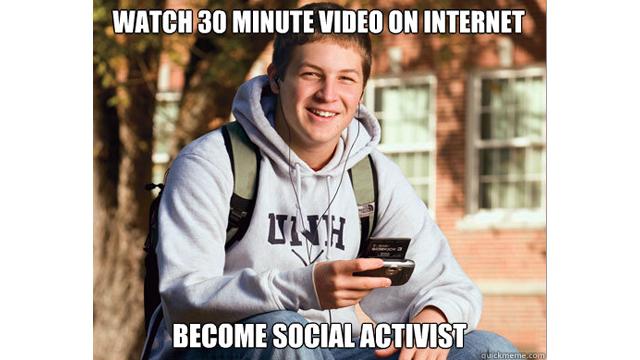
You’ve heard it before: The Internet has revolutionized organizing. It brought you the Arab Spring, the Indignados and Occupy. But it has also produced legions of armchair clicktivists — those who only participate online and won’t budge off their butts.
While there is, of course, truth in both the half-full and half-empty views of online activism, there are also many innovations changing how we think about what online organizing is capable of and building clear pathways to support offline, real-world actions.
It’s high time to do a review of what’s out there. Not all these tools are brand new, but they are being used and matched with traditional organizing to leverage online entry to campaigns that will lead to offline support.
This past week, Strike Debt launched its Rolling Jubilee, an inspiring plan to buy up debt for pennies on the dollar and then abolish it. While relieving real, offline debt burdens, the action is intended to dramatize an unjust system and spur more widespread organizing and resistance.
Supporting this work are scores of folks who have lent their Twitter feeds or Facebook accounts to promote the campaign. Donating your account is an easy way to amplify the message of a group you agree with. For a campaign like Strike Debt, it ensures that your messages not only get out, and get out exactly as you designed them. Donors determine the number of tweets or messages to give, and they can start or stop at any point.
Another interesting social media tool being used now by Making Change at Walmart and other groups allows people to sign up for a program that will identify their Facebook friends who work, or have worked, at Walmart and send them a message about OUR Walmart — the organization of Walmart employees who have joined together to demand their rights on the job.
The Share For Respect app is a creative response to Walmart’s many attempts both to silence and to retaliate against workers who have spoken out about abuses they face. It turns Facebook into an educating, organizing machine.
Share for Respect is only one of the e-tools lifting up the Walmart worker campaigns. In advance of several weeks of strikes and other activities planned for Black Friday, the biggest shopping day of the year, a geographic, zipcode-based tool is being used to help people locate events closest to their entered zipcode, sign up for an event that was already created, or adopt a store and start their own event at “unadopted” stores.
This tool is embedded in a platform that includes a number of other social network-powered capabilities that help people find physical storage space for materials, create event pages, and use tracking programs for petitions and letters-to-the-editor.
Since the striking workers will be foregoing even their usual low-wage pay, a WePay account was set up to donate grocery gift cards. Online donating is not new, but alongside this suite of other tools, this “Support a Worker” effort rounds out a whole set of options for supporters to choose from along the proverbial ladder of engagement, ranging from one click on a petition to donating to showing up at a store.
Harnessing the online world for offline activism has the added benefit of decentralizing the campaign and spreading both information and leadership to places that organizers involved in on-the-ground work are not able to reach. This can result in actions and strikes taking place where no other previous activity has happened, without direct connection to initial organizers in groups like OUR Walmart or Warehouse Workers United.
Additionally, a wide variety of information-gathering tools are being used by campaigns in different ways. Many campaigns begin with research — even just by documenting stories from the lives of people who have been affected by the issue in question. Currently on the Corporate Action Network website there is just such a survey, which is collecting information confidentially about returning veterans’ experiences at for-profit universities.
Such institutions are making it tough for military veterans returning to the United States to get an affordable education. They have a history of targeting veterans and are becoming notorious recently for deceptive recruitment practices, low-quality instruction, crippling tuition, high dropout rates, and poor job placement. Documentation of theses stories can support a strategic campaign. Soon, the website will also include a secure link for corporate whistleblowers to use in reporting abusive practices within their institutions.
However cool these tools are, some people will still see the glass of online activism as half empty. “You can’t make a baby by kissing”; clicks alone won’t bring about the change in the real world. But there’s no telling what a click can eventually lead to once things heat up. Clicks can be gateways to significant actions that bring about real change.
So take all this with a grain of salt, but keep in mind that it’s worth a shot. The $64,000 question for organizers or campaigners has always been how to move people along the engagement ladder, especially in people-power movements in which levels of participation directly correspond to the chances of success.
You probably won’t win with the Internet alone, but with tools like these it is becoming a better and better place to start.
3 WAYS TO SHOW YOUR SUPPORT
- Log in to post comments













